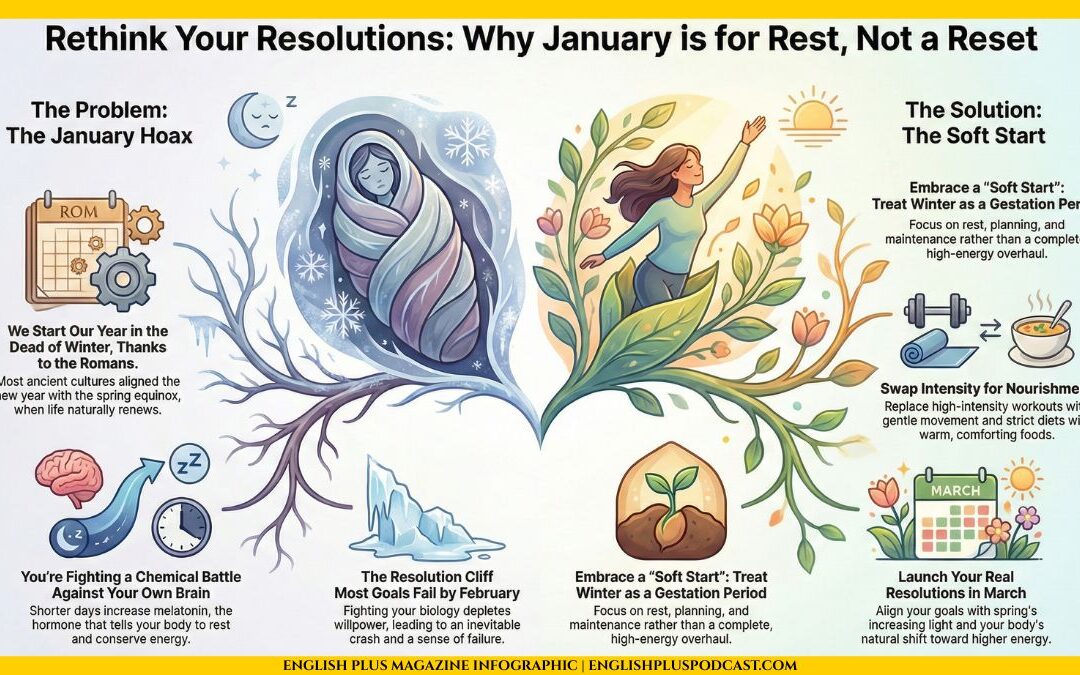- The Gist
- The Role of Education in Combating Systemic Racism
- Teaching an Inclusive and Accurate History
- Promoting Critical Thinking and Open Dialogue
- Diversifying Representation in Education
- Addressing Bias and Discrimination in Schools
- Empowering Students to Become Agents of Change
- Let’s Talk
- Let’s Learn Vocabulary in Context
The Gist
The Role of Education in Combating Systemic Racism
Systemic racism, often described as racism embedded in the laws, policies, and institutions of society, is a deeply rooted issue that requires substantial change across multiple fronts. Education is one of the most powerful tools for addressing this issue, but to truly make an impact, it must go beyond the basics of classroom learning. It needs to promote critical thinking, inclusivity, and the dismantling of harmful stereotypes. Let’s explore how education can play a transformative role in combating systemic racism.
Teaching an Inclusive and Accurate History
One of the first steps in using education to fight systemic racism is ensuring that students learn an inclusive and accurate version of history. For too long, many education systems have focused on a Eurocentric view of the past, glossing over or entirely ignoring the contributions and struggles of people of color. This lack of representation not only skews students’ understanding of the world but also reinforces harmful racial biases.
By teaching a more complete version of history—one that includes the experiences of marginalized groups, the injustices they’ve faced, and their contributions to society—students can develop a deeper understanding of systemic racism and its historical roots. This kind of curriculum helps young minds to recognize the inequalities that still exist today and empowers them to advocate for change.
Promoting Critical Thinking and Open Dialogue
Education also has the ability to encourage critical thinking, which is essential in combating systemic racism. When students are taught to think critically, they become better equipped to question the systems and structures around them. They learn to ask difficult questions, such as why certain groups are overrepresented in low-income communities or why racial disparities persist in the criminal justice system.
In classrooms that promote open dialogue, students can discuss complex and uncomfortable topics like race, privilege, and inequality. These discussions are crucial for breaking down stereotypes and fostering empathy. When students engage in meaningful conversations about racism, they are more likely to become advocates for equity and justice in their communities.
Diversifying Representation in Education
Another crucial factor in combating systemic racism through education is ensuring diversity among educators and curriculum materials. Representation matters, and students of all racial backgrounds benefit from seeing teachers, authors, and historical figures who reflect the diversity of the world around them.
Schools and universities need to make a conscious effort to hire more educators from marginalized backgrounds, incorporate diverse perspectives into their curriculum, and expose students to a wide range of experiences. When students see diverse role models, they’re more likely to challenge the notion of racial superiority and recognize the value of different cultures and perspectives.
Addressing Bias and Discrimination in Schools
Systemic racism doesn’t just exist outside the classroom—it can be found within the walls of schools themselves. Students of color often face discrimination and bias from peers, educators, and school policies. From disciplinary actions that disproportionately target Black and Hispanic students to a lack of support for those facing racial bullying, schools can unintentionally perpetuate systemic racism if they are not actively working to combat it.
To address these issues, schools need to implement policies that promote equity. This includes reviewing disciplinary practices to ensure fairness, creating anti-racism training programs for staff, and developing support systems for students who experience racism. Schools should be safe spaces where all students feel valued and empowered to succeed.
Empowering Students to Become Agents of Change
Finally, education can combat systemic racism by empowering students to become active agents of change. Schools can teach students about advocacy, social justice, and the importance of standing up for what is right. Through service-learning projects, participation in activism, and exposure to community leaders, students can see firsthand the power they have to make a difference.
When students are given the tools to advocate for change, they carry those skills with them into adulthood. They become the next generation of leaders, activists, and educators who will continue the fight against systemic racism.
Education is a powerful force for change, and when it’s used effectively, it can help dismantle the structures that uphold systemic racism. From creating inclusive curriculums to encouraging critical thinking, schools have the opportunity to shape a future where equality is not just an ideal but a reality. So, how can we all work to ensure that education fulfills this role? Let’s explore how we can make our education systems more inclusive and impactful in the fight against systemic racism.
Let’s Talk
It’s interesting, isn’t it? The idea that education plays such a key role in combating systemic racism. But it’s more than just teaching facts—it’s about shaping perspectives, challenging biases, and encouraging people to think critically about the world around them. The real question is, how can we make sure this happens in our schools today?
Think about your own education for a moment. How often were issues like systemic racism or inequality brought up in your classroom? If they were, was it in a way that made you stop and really think, or was it glossed over like a chapter in a textbook? For a lot of people, these topics weren’t discussed nearly enough. That’s where things get tricky—because if schools don’t address these issues directly, where else are students supposed to learn about them?
One thing that comes to mind is how representation—or the lack of it—can shape our view of the world. If all you ever see in textbooks or on classroom walls are the same faces and stories, it subtly reinforces the idea that some contributions to society are more important than others. And that’s where education can either be part of the problem or the solution. How different might things be if we had more diverse role models in our curriculum? It’s not just about learning who did what—it’s about seeing the value in different perspectives and experiences. Did you have that growing up? Were there stories or lessons that opened your eyes to the world beyond your immediate surroundings?
Another thing I keep coming back to is the role of teachers. A lot of the time, students look to their teachers not just for academic knowledge but for guidance on how to navigate the world. But what happens when teachers themselves don’t have the tools or the training to address systemic racism in the classroom? It’s not enough to have anti-racism policies on paper—educators need support in making those conversations happen in a meaningful way. I wonder, have you ever had a teacher who really opened up those kinds of discussions in a way that made an impact?
Then there’s the question of how we handle the biases that already exist within school systems. Disproportionate disciplinary actions, biased testing methods, and even the subtle ways teachers might treat students differently—all of these are examples of systemic issues that education can either perpetuate or challenge. So, how do we ensure schools are places of fairness and equity for all students? Maybe it starts with being more conscious of those biases and addressing them head-on. Have you ever noticed this kind of bias in schools, either as a student or as a parent?
And finally, there’s the power of education to empower. When students are taught to think critically, to question injustices, and to use their voices, they’re not just learning—they’re becoming active participants in shaping the future. That’s a pretty big deal. But it’s also something that doesn’t happen automatically. It takes effort, support, and a willingness to tackle tough topics, even when it’s uncomfortable.
So, what do you think? How can we all push for education that not only teaches but truly challenges and empowers students to confront systemic racism? What changes would make the most difference? Let’s dive into how we can make our schools more than just places of learning—they can be spaces for real change.
Let’s Learn Vocabulary in Context
Let’s take a closer look at some of the key vocabulary we touched on while discussing how education can combat systemic racism. These terms help us understand the issue in deeper ways, and they can be useful in everyday conversations.
First up is systemic racism. This phrase refers to racism that’s not just about individual prejudice, but something embedded in the systems and institutions around us—like schools, workplaces, and even laws. It’s when inequality is baked into the structure of society, often without people even realizing it. For example, you might use it when talking about disparities in education or housing: “The fact that certain schools receive less funding because of the neighborhoods they’re in is an example of systemic racism.”
Then there’s inclusive curriculum. This means a school curriculum that includes diverse perspectives and histories, rather than focusing on one dominant narrative. It ensures that students learn about the contributions and experiences of people from different racial and cultural backgrounds. In real life, you could say, “I’m glad my kids’ school is moving toward a more inclusive curriculum that highlights voices from various cultures.”
Critical thinking is another important term. It’s the ability to think deeply and independently about information, questioning assumptions and analyzing evidence before forming a conclusion. In the context of education, critical thinking helps students challenge stereotypes and the status quo. You could use it like this: “Critical thinking skills are so important because they help students see beyond surface-level information and understand the root causes of issues.”
The idea of representation is crucial when it comes to education. Representation refers to seeing people who look like you, share your experiences, or reflect your culture in positions of influence or in the content you’re learning. This could mean diverse teachers, authors, or historical figures in textbooks. You might say, “Representation matters because when kids see people who look like them succeeding, they realize that they can achieve great things too.”
Lastly, let’s talk about bias. Bias refers to a preference or prejudice in favor of or against something, often in ways that are unfair. In the context of systemic racism, biases can show up in the way schools discipline students, or even in how teachers may unconsciously treat students differently based on their race. An everyday example could be: “We all have biases, but the important thing is to be aware of them and work to challenge them.”
Now, let’s think about this: How do you think schools can create more inclusive curriculums that help fight systemic racism? And have you ever experienced or noticed bias in an educational setting? These questions can open up important conversations about how we can all contribute to creating a more fair and equitable system.










0 Comments